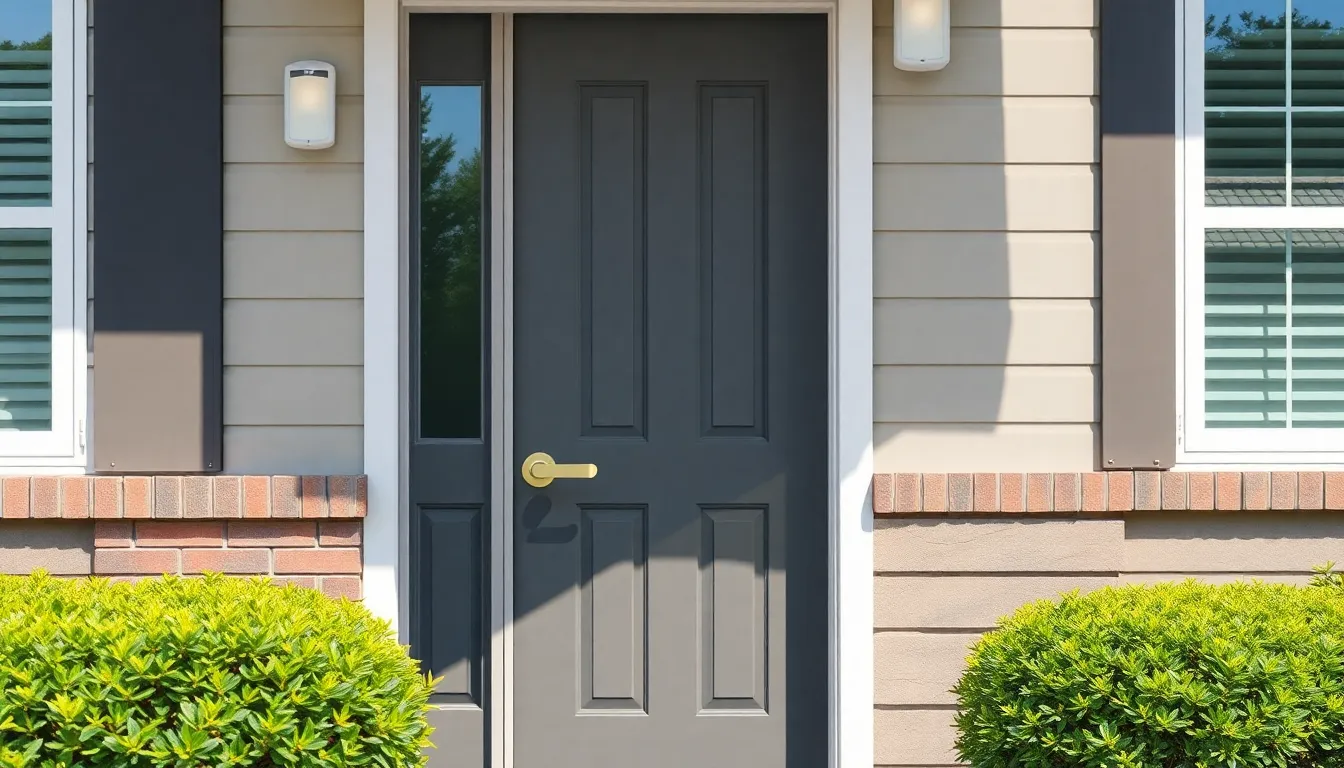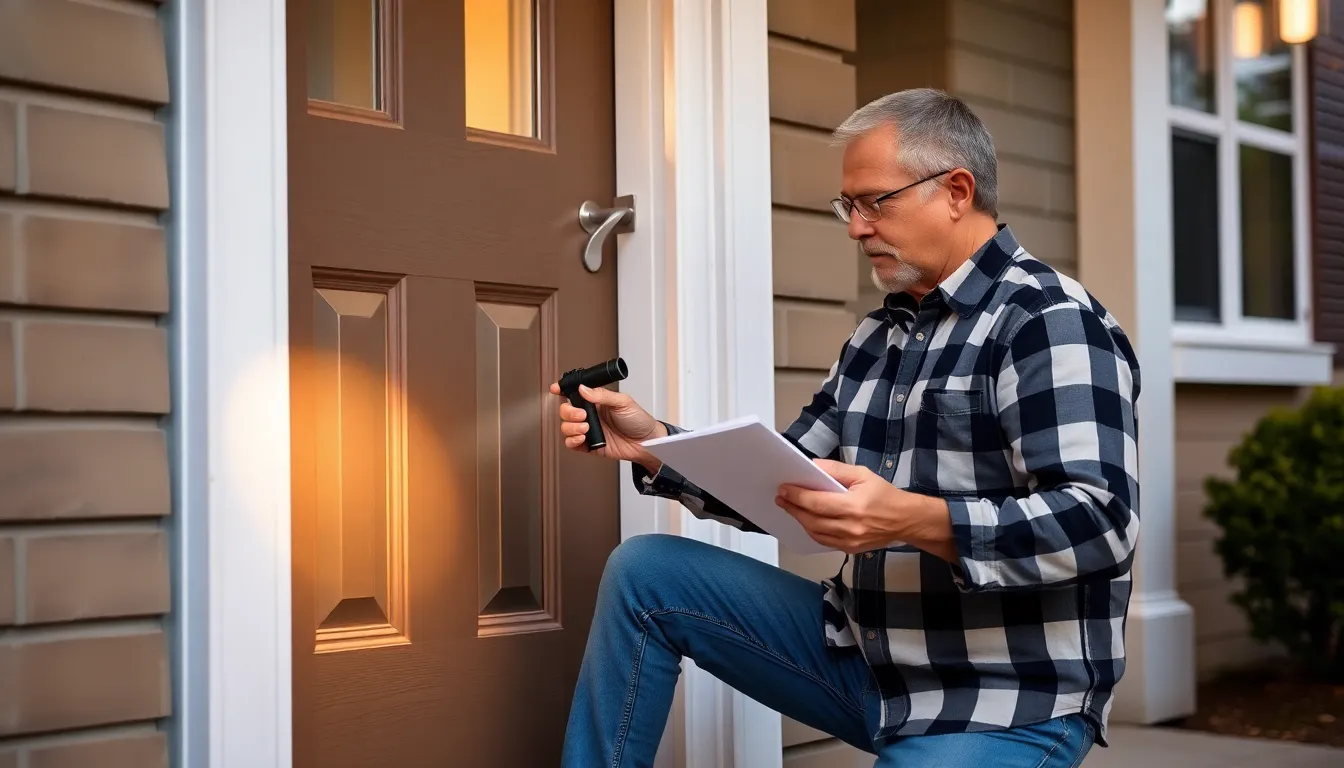In a world where doorbells can ring without anyone at the door and smart fridges might just know more about your snack habits than you do, home security has never been more important. A home security assessment isn’t just a fancy term for checking if your dog is intimidating enough; it’s about ensuring your castle is protected from unwanted visitors.
Imagine the peace of mind that comes with knowing your home is as secure as Fort Knox—minus the gold bars and armed guards. Whether it’s evaluating your locks or considering high-tech gadgets, a thorough assessment can save you from sleepless nights and those “did I leave the garage open?” panic attacks. So, let’s dive into the essentials of a home security assessment and turn your home into a fortress that even the sneakiest of burglars wouldn’t dare approach.
Table of Contents
ToggleUnderstanding Home Security Assessment
Home security assessment plays a vital role in enhancing safety at residence. A detailed examination reveals vulnerabilities, aiding in the implementation of effective security measures.
What Is Home Security Assessment?
Home security assessment entails a thorough evaluation of current security systems and practices. This process includes inspecting locks, alarms, and surveillance cameras. Evaluators also consider lighting, landscaping, and access points around the property. Assessments help identify potential weaknesses and recommend appropriate improvements.
Importance of Home Security Assessment
Importance of home security assessment lies in its capacity to prevent crime and ensure safety. A comprehensive assessment enhances awareness of security gaps. Implementing recommendations can significantly reduce the risk of break-ins. Statistics show that homes without security measures are 300% more likely to be burglarized. Ensuring personal safety contributes to peace of mind for families.
Components of Home Security Assessment

A comprehensive home security assessment includes various components that work together to improve safety. Each element contributes to a stronger overall security system for the home.
Physical Security Measures
Physical security measures encompass locks, doors, windows, and barriers. Inspecting door locks reveals vulnerabilities; deadbolts enhance protection. Solid-core doors provide better resistance against forced entry. Window locks should be secure, with options like security bars or laminated glass for added safety. Fencing acts as a physical barrier, reducing access to the property. Landscaping awareness also matters; shrubs or trees near windows can provide hiding spots for intruders. Employing these measures creates a more secure environment.
Technology and Systems
Technology enhances home security through alarm systems, surveillance cameras, and smart devices. Alarm systems act as deterrents, alerting homeowners to breaches. Surveillance cameras allow constant monitoring, which helps identify suspicious activity. Smart home devices offer remote control over locks, lights, and alarms, increasing the convenience of managing home security. Integrating home automation with security measures provides robust protection. These technological advancements lead to better safety and peace of mind for families.
Steps to Conduct a Home Security Assessment
A thorough home security assessment identifies vulnerabilities and strengthens protection. Following steps streamline the evaluation process.
Evaluating Entry Points
Start with doors. Inspect each entry point for proper locking mechanisms. Deadbolts enhance security, while reinforced frames provide added durability. Next, evaluate windows. Ensure they have secure locks and consider installing window sensors. Check sliding glass doors too; sliding locks and security bars deter break-ins. Assess the garage. An automatic opener with a secure code offers protection, but manual locks also serve as a backup. Each entry point contributes to overall security; addressing weaknesses significantly reduces risks.
Assessing Outdoor Security
Examine the perimeter. Install motion-sensor lights to illuminate pathways and deter intruders. Landscaping choices matter; keep shrubs trimmed and avoid tall plants near windows that could provide cover. Check fencing and gates for sturdiness and proper locking. Surveillance cameras offer 24/7 monitoring and act as deterrents; strategically placing them enhances visibility. Use technology wisely; smart outdoor devices allow for remote access and alerts. Outdoor security measures reinforce the effectiveness of the overall assessment, ensuring a comprehensive safety strategy.
Common Vulnerabilities and Risks
Home security assessments uncover various vulnerabilities, providing critical insights for homeowners. Identifying risk factors helps create a more secure living environment.
Identifying Weak Spots
Assessing entry points, such as doors and windows, reveals potential weak spots. Weak locks, gaps in frames, and poorly secured sliding doors heighten risks. Inspecting garage access also plays a crucial role, as many burglars target this area. Outdoor structures, like fences and sheds, are often overlooked but can provide cover for intruders. Enhancements like deadbolts, window locks, and reinforced frames significantly increase security. Homeowners should consider implementing measures that target specific vulnerabilities around their property.
Evaluating Neighborhood Safety
Neighborhood safety impacts overall home security significantly. Crime rates can vary widely across different areas. Reviewing local crime statistics helps identify trends and potential risks nearby. Engaging with local community programs fosters a sense of vigilance and collaboration in safety efforts. Homeowners achieve better awareness of suspicious activities through neighborhood watch programs. Factors like street lighting, visibility, and community involvement also shape the security landscape. Taking these elements into account enables homeowners to make informed decisions about their safety strategies.
A home security assessment is essential for maintaining safety in today’s world. By identifying vulnerabilities and implementing effective measures, homeowners can significantly reduce the risk of burglary and enhance peace of mind. Investing time in this thorough evaluation not only protects property but also fosters a sense of security for families.
As technology continues to evolve, integrating smart devices with traditional security measures can offer added layers of protection. Ultimately, prioritizing home security is a proactive step toward creating a safer living environment and ensuring that loved ones feel secure at home.



